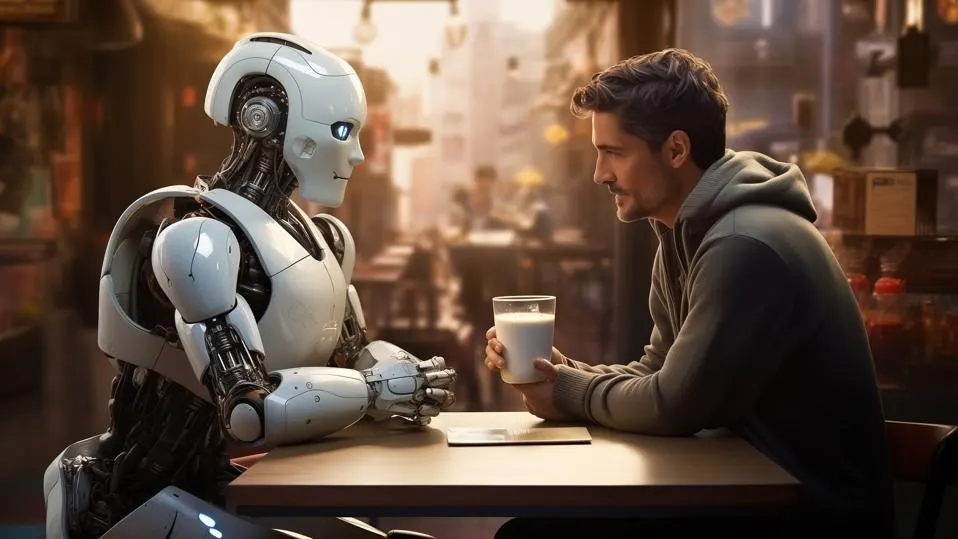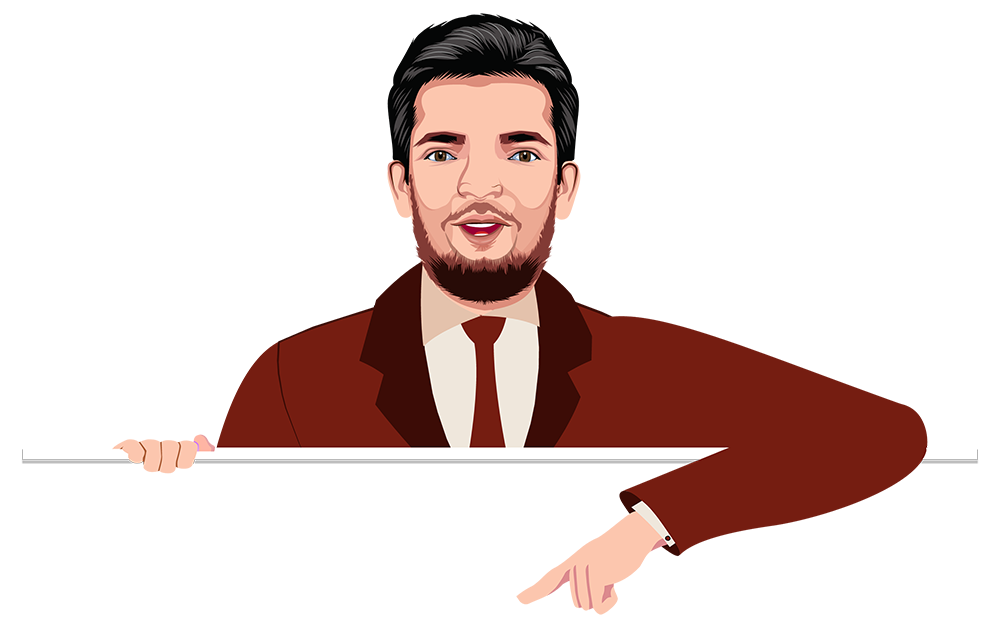
Graphic design has always been a blend of art and technology. From the early days of print media to the digital revolution, the tools designers use have evolved dramatically. But now, with the rise of Artificial Intelligence (AI) tools, the industry is witnessing a fundamental shift.
Today, AI-powered design platforms can generate logos, create layouts, recommend color schemes, and even produce marketing creatives within seconds. While these tools are powerful, they raise a critical question: Will AI replace human creativity, or will it simply enhance it?
In this blog, we’ll explore the debate of AI tools vs human creativity in graphic design, their pros and cons, how they are shaping the future, and why businesses must find the right balance to stay relevant.
1. The Rise of AI in Graphic Design
AI has entered almost every industry, and graphic design is no exception. Tools like Canva’s AI features, Adobe Sensei, DALL·E, MidJourney, and Runway are transforming how creatives approach design.
How AI is being used in design today:
- Logo Generation: AI tools can create multiple logo variations within seconds.
- Automated Layouts: Platforms analyze data and auto-generate designs for web or print.
- Image Editing: AI can remove backgrounds, enhance visuals, and apply filters instantly.
- Content Personalization: AI-driven designs adapt to specific audiences in real time.
- Idea Generation: Designers can use AI prompts for creative brainstorming.
These advancements save time and costs, but they also raise concerns about originality and authenticity.
2. The Power of Human Creativity
While AI excels at speed and efficiency, human creativity remains irreplaceable. Graphic design is not just about visuals—it’s about emotion, storytelling, and cultural context.
Strengths of human designers:
- Emotional Intelligence: Humans can evoke feelings and connect with audiences in ways machines can’t.
- Cultural Sensitivity: Designers understand local traditions, languages, and cultural nuances.
- Strategic Thinking: Creativity often involves aligning visuals with brand strategy and long-term vision.
- Originality: AI uses existing data; humans innovate from scratch.
- Problem-Solving: Human designers think outside the box when challenges arise.
No matter how advanced AI becomes, it lacks the soul and depth of human imagination.
3. AI Tools vs Human Creativity: A Side-by-Side Comparison
| Aspect | AI Tools | Human Creativity |
|---|---|---|
| Speed | Delivers results in seconds | Requires more time |
| Cost | Reduces expenses with automation | Higher investment in skills and expertise |
| Originality | Limited to training data, can lead to repetitive designs | Truly original and innovative |
| Emotional Depth | Cannot replicate emotions or lived experiences | Connects with audiences emotionally |
| Scalability | Can produce thousands of variations instantly | Limited by human capacity |
| Adaptability | Learns patterns but struggles with cultural/strategic context | Adapts to culture, strategy, and brand storytelling |
| Collaboration | Acts as a supportive assistant | Leads creative direction and innovation |
4. The Future of Graphic Design: Collaboration, Not Competition
Instead of seeing AI as a threat, businesses and designers should view it as a partner. The future of graphic design will thrive at the intersection of AI efficiency and human creativity.
Ways AI and humans can work together:
- AI for Routine Tasks: Automating repetitive work like resizing, background removal, and template creation.
- Humans for Strategy & Emotion: Crafting compelling stories, unique visuals, and campaign direction.
- AI for Data Insights: Analyzing audience behavior to suggest designs.
- Humans for Branding: Ensuring brand identity stays authentic and consistent.
This hybrid model ensures businesses get the best of both worlds—speed + creativity.
5. Case Studies: How Brands Use AI and Creativity Together
Coca-Cola
Launched the “Create Real Magic” campaign using AI tools like DALL·E and ChatGPT to empower fans to design Coke-themed art. The result? A viral campaign blending AI innovation with human imagination.
Nike
Uses AI to analyze customer data and create personalized sneaker designs, but their creative direction and storytelling still come from human designers.
Adobe
Adobe integrates AI through Adobe Sensei, which automates editing but positions itself as a creative assistant for designers—not a replacement.
These examples prove that brands succeed by combining AI’s speed with human-led creativity.
6. Challenges of AI in Graphic Design
While promising, AI has its downsides:
- Lack of Originality: AI-generated designs often look similar.
- Ethical Concerns: Copyright and ownership issues arise from AI-trained data.
- Job Anxiety: Many designers fear being replaced.
- Over-Reliance on Automation: Brands risk losing authenticity if they rely too much on AI.
- Bias in AI Training: AI reflects the data it’s trained on, which can include biases.
Businesses must approach AI thoughtfully, ensuring human oversight remains central.
7. Opportunities for Businesses in the Digital Age
For companies, the combination of AI and human creativity offers huge advantages:
- Faster Turnaround: AI speeds up production.
- Cost Efficiency: Lower design costs for small businesses and startups.
- Personalization at Scale: AI helps create customized campaigns for diverse audiences.
- Global Competitiveness: Creative branding with AI innovation ensures a strong market position.
At the same time, businesses that fail to adapt risk falling behind competitors who leverage this balance effectively.
8. The Role of Agencies like Picasso Multimedia
At Picasso Multimedia, we believe in the fusion of AI tools and human creativity.
Here’s how we help brands thrive:
- AI-Powered Design Support: Leveraging AI for speed and efficiency.
- Human-Led Creativity: Ensuring originality, cultural relevance, and storytelling.
- Brand Strategy Alignment: Crafting designs that drive measurable business growth.
- Cutting-Edge Trends: Keeping businesses ahead in a rapidly evolving design landscape.
Our approach ensures clients benefit from the innovation of AI without losing the soul of human creativity.
9. The Future Outlook
Looking ahead, the graphic design industry will evolve into a co-creative ecosystem. We’ll see:
- AI as a Creative Partner: Offering smart suggestions to inspire designers.
- Immersive Design: AI-powered VR/AR experiences shaping brand identity.
- Hyper-Personalization: Every customer will experience a unique version of a brand’s design.
- Ethical Branding: Businesses will need to balance AI efficiency with creative responsibility.
The future isn’t about AI vs humans—it’s about AI + humans working together to unlock new levels of creativity.
Conclusion
The debate of AI Tools vs Human Creativity: The Future of Graphic Design is not about replacement but about collaboration. AI brings speed, efficiency, and data-driven insights, while human creativity adds emotion, originality, and strategy.
Businesses that embrace this fusion of technology and imagination will lead the future of branding and design. At Picasso Multimedia, we champion this synergy—helping brands grow with designs that are not only smart but also soulful.
In the end, the future of graphic design lies not in machines alone or humans alone, but in the powerful partnership between the two.

